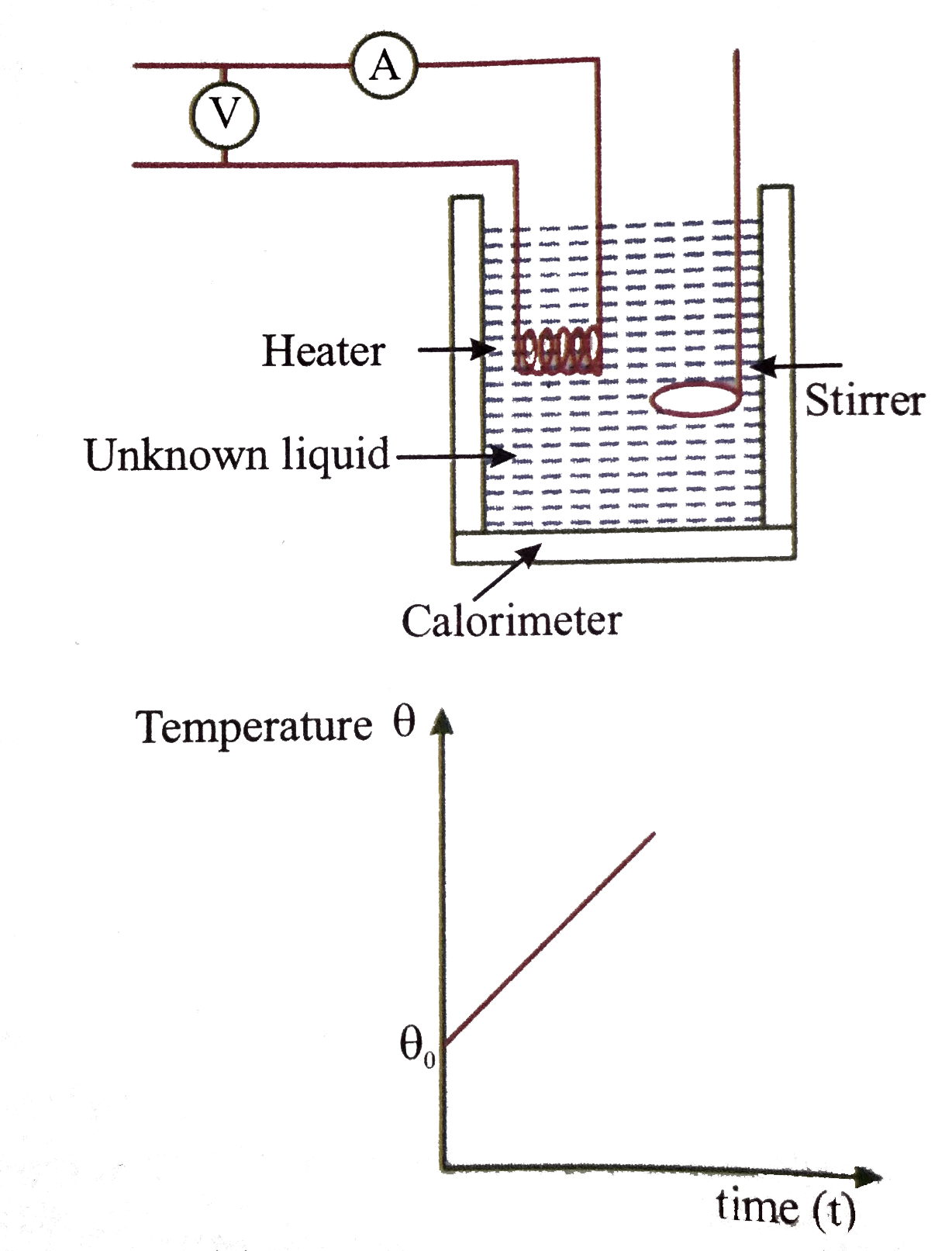An alloy consists of metals of mases ……. and specific heat capacitors . What is the specific heat capacity of the alloy?
The correct Answer is:NA
Step by step video, text & image solution for An alloy consists of n metals of mases m_(1),m_(2), m_(3) ……. m_(m) and specific heat capacitors s_(1), s_(2), s_(n). What is the specific heat capacity of the alloy? by Physics experts to help you in doubts & scoring excellent marks in Class 11 exams.
Updated on:21/07/2023Topper's Solved these Questions
Similar Questions
Two bodies of masses m1 and m2 and specific heat capacities S1 and S2 are connected by a rod of length l, cross-ssection area A, thermal conductivity K and negligible heat capacity. The whole system is thermally insulated. At time t=0 , the temperature of the fisrt body is T1 and the temperature of the second body is T2(T2>T1) . Find the temperature difference between the two bodies at time t.
View SolutionThe specific heat capacities of n liquid are s1,s2,s3,……..sn respectively and their respective temperatures t1,t2,t3,…….tn. Equal masses of the liquids are mixed together. Find the temperature of the mixture.
View Solution
Knowledge Check
The S.I unit of specific heat capacity is-
AJkg−1k−1BJkg−1CJmol−1k−1DNone of theseThe S.I. unit of specific heat capacity is
AJK−1BJkg−1C J mol −1K−1DJkg−1K−1In making an alloy, a substance of specific gravity s1 and mass m1 is mixed with another substance of specific gravity s2 mass m2 , then the specific gravity of the alloy is
A(m1+m2s1+s2)B(s1s2m1+m2)C(m1+m2m1/s1+m2/s2)D(m1/s1+m2/s2m1+m2)
Define heat capacity and specific heat capacity. Give their S.I. units.
View SolutionEqual masses of three liquids are thoroughly mixed. The specific heat capacities of the liquids ar s1,s2 and s3 and their temperatures t1,t2 and t3 respectively. Find the temperature of the mixture.
View SolutionIn making an alloy, a substance of specific gravity s1 and mass m1 is mixed with another substance of specific gravity of the alloy is
View SolutionNms−1 is the unit of
View SolutionFigure shows an electrical calorimeter to determine specific heat capacity of an unknown liquid, First of all, the mass of empty calorimeter (a copper container) is measured and suppose it is m1. Then the unknown liquid is poured in it. Now the combined mass of calorimeter+liquid system is measured and let it be m2. So the mass of liquid is (m2−m1). Initially both were at room temperature (θ0).
Now a heater is immeresed in if for time interval t. The voltage drop across the heater is V and current passing through it is I. Due to heat supplied, the temperature of both the liquid and calorimeter will rise simultaneously. After tsec, heater was switched off, and final temperature is θr. If there is no heat loss to surroundings. Heat supplied by the heater=Heat absorbed by the liquid+heat absorbed by the calorimeter (VI)t=(m2−m1)S1(θf−θ0)+m1Sc(θf−θ0)
The specific heat of the liquid S1=(VI)tθf−θ0−m1Sc(m2−m1)

Radiation correction: There can be heat loss to environment. To compensate this loss, a correction is introduced.
Let the heater was on for tsec, and then it is switched off. Now the temperature of the mixture falls due to heat loss to environment. The temperature of the mixture is measured t/2sec. after switching off. Let the fall in temperature during this time is ɛ
Now the corrected final temperature is taken as θf=θf+ɛ
In this experiment voltage across the heater is 100.0V and current is 10.0A, and heater was switched on for t=700.0sec. Initially all elements were at room temperature θ∘=10.0∘C and final temperature was measured as θf=73.0∘C.
Mass of empty calorimeter ws 1.0kg and the combined mass of calorimeter + liquid is 3.0kg. The specific heat capacity of the calorimeter =3.0×103J/kg∘C. The falls in temperature 350 second after switching off the heater was 7.0∘C. Find the specific heat capacity of the unknown liquid in proper significant figures.
View Solution